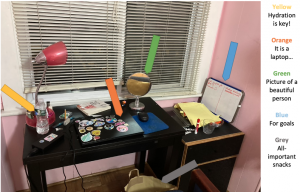Happy First Week of School!
In the time when there is still no vaccine for Covid 19, academic year is nearing a start for everyone from elementary to higher education students. According to my observations many teachers, students and their parents alongside institution managers are still conversing over matters of safe ways to return to school while maintaining provision of qualitative educational experience.
This week I want to encourage everyone to share stories of the objects which are related to the first day of school this year (Fall 2020). If you are out of school, please feel free to share stories of someone you know, friends, neighbors or family members. Let’s see how different it will be from the previous years.
Let me remind you how to participate.
- Choose an object what fits the theme
- Take 1-3 pictures of the object
- Please describe how your object reflects the theme of the week. This is your chance to make your object shine and share its story 🙂
Please include the answers to the following information when submitting your entry:
- What it your name?
- Where do you live?
- What do you do?
Email your pictures and descriptions to Sayyara.huseynli@tufts.edu
P.S. Please note that by submitting your response to this project you agree to its public display.





